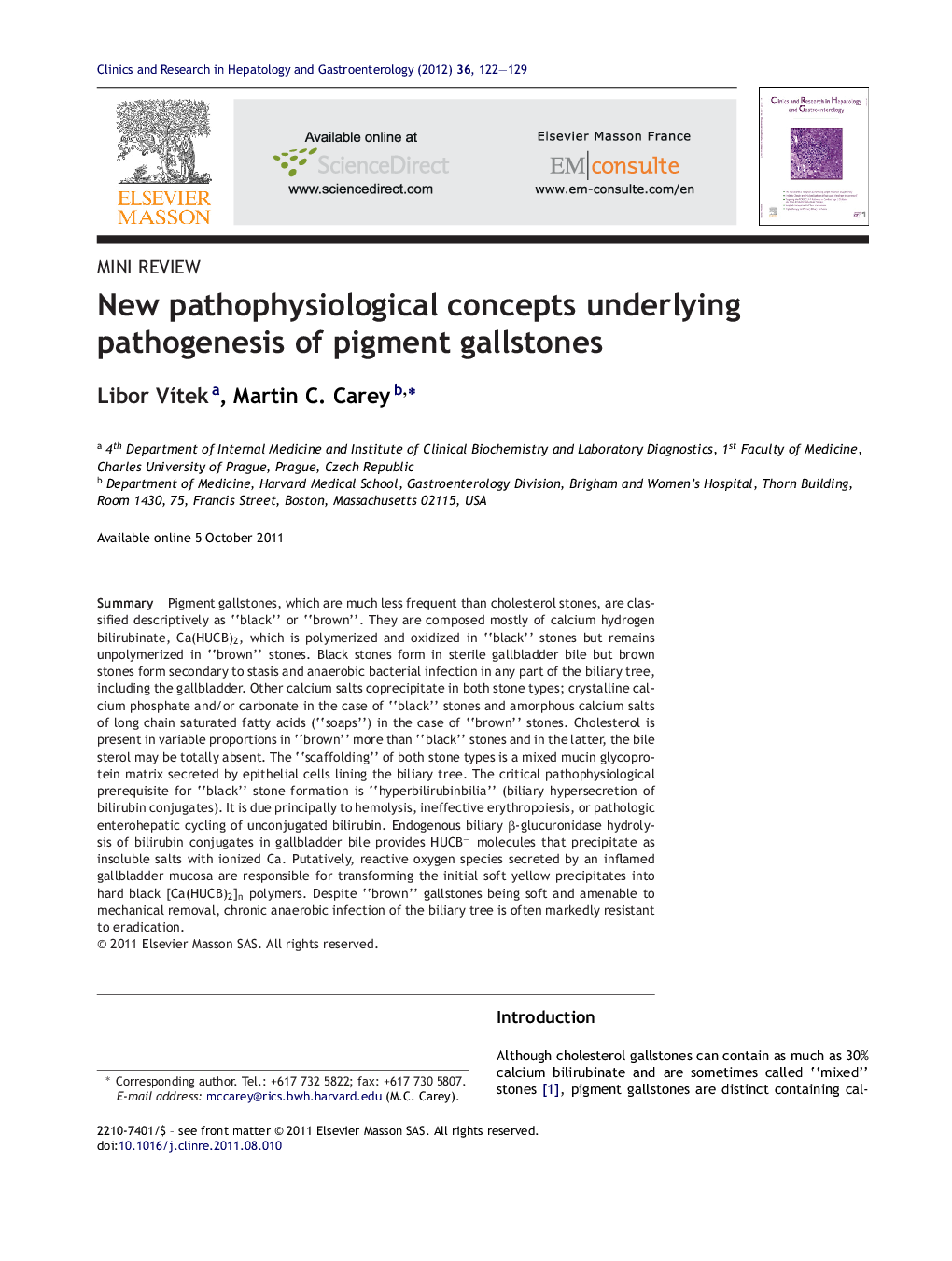| Article ID | Journal | Published Year | Pages | File Type |
|---|---|---|---|---|
| 3286729 | Clinics and Research in Hepatology and Gastroenterology | 2012 | 8 Pages |
SummaryPigment gallstones, which are much less frequent than cholesterol stones, are classified descriptively as “black” or “brown”. They are composed mostly of calcium hydrogen bilirubinate, Ca(HUCB)2, which is polymerized and oxidized in “black” stones but remains unpolymerized in “brown” stones. Black stones form in sterile gallbladder bile but brown stones form secondary to stasis and anaerobic bacterial infection in any part of the biliary tree, including the gallbladder. Other calcium salts coprecipitate in both stone types; crystalline calcium phosphate and/or carbonate in the case of “black” stones and amorphous calcium salts of long chain saturated fatty acids (“soaps”) in the case of “brown” stones. Cholesterol is present in variable proportions in “brown” more than “black” stones and in the latter, the bile sterol may be totally absent. The “scaffolding” of both stone types is a mixed mucin glycoprotein matrix secreted by epithelial cells lining the biliary tree. The critical pathophysiological prerequisite for “black” stone formation is “hyperbilirubinbilia” (biliary hypersecretion of bilirubin conjugates). It is due principally to hemolysis, ineffective erythropoiesis, or pathologic enterohepatic cycling of unconjugated bilirubin. Endogenous biliary β-glucuronidase hydrolysis of bilirubin conjugates in gallbladder bile provides HUCB− molecules that precipitate as insoluble salts with ionized Ca. Putatively, reactive oxygen species secreted by an inflamed gallbladder mucosa are responsible for transforming the initial soft yellow precipitates into hard black [Ca(HUCB)2]n polymers. Despite “brown” gallstones being soft and amenable to mechanical removal, chronic anaerobic infection of the biliary tree is often markedly resistant to eradication.
